Garryland
Houses within 10km of this house
Displaying 36 houses.
Houses within 10km of Garryland
Displaying 36 houses.
| House name | Description | |
|---|---|---|
| Raheen | Raheen is associated with both the Kilkelly and O'Hara families. In the 1770s it seems to have been a residence of the Taylor family, with whom the O'Haras intermarried. In the 1830s the OS Name Books record it as "a neat house, in form like a cottage two stories high." Raheen House was badly damaged by fire in the latter part of the twentieth century. The entrance gateway is still extant. |

|
| Coole | Coole House was built in the late 18th century for Robert Gregory. It was demolished in 1941 but the gardens and some of the parkland are still extant and maintained by the Forestry and Wildlife Service. Part of the farm buildings now houses an interpretive centre and tea rooms. See www.coolepark.ie |

|
| Tullira | Lewis records Tillyra as the seat of J. Martyn. Tullira was originally a tower house which was modified at various times. The OS Name Books record it as a tower house with a modern house attached. The gardens included a hot house. In 1906 it was the property of Edward Martyn when the buildings were valued at £100. It is still extant and was the home of Lord and Lady Hemphill in the 20th century. It has had a number of owners since then and in 2013 was offered for sale. |

|
| Lough Cutra (Lough Cooter) | In 1814 Loughcooter was the residence of C. Vereker, MP while Lewis records it as the seat of Viscount Gort. In the 1850s it was owned by Viscount Gough and was valued at £80. In 1906 it was still in the possession of Lord Gough when the buildings were valued at £300. Lough Cutra is still extant and occupied. A restoration programme is underway since 2000 and the castle is now available as an event location. Some of the stable yard has been converted into holiday cottages. See www.loughcutra.com. |

|
| Prospect (Kiltartan) | Occupied by A. Nolan in 1814. Lewis records Prospect as the seat of Nolan in 1837. By the time of Griffith's Valuation it appears to have been part of the estate of the representatives of Vicesimus Knox and leased to William Mulville. The house is still extant and occupied. |
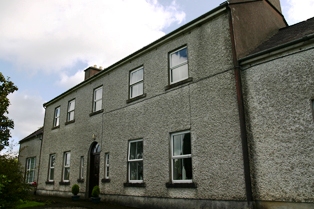
|
| Ashfield House | The house at Ashfield seems to have been known as Clooneene, particularly when it was the home of the Blake Forster family. In 1814 it was the home of Francis Blake Forster but by 1837 Lewis records it as in the ownership of D. McNevin. Earlier, in 1786, Wilson wrote that it was the seat of Mr. Forster. Ashfield House is demolished but substantial parts of the walled garden and the gate lodge are still extant. |

|
| Ballygeagin House | In 1837 Lewis lists Ballygaggen as a residence of the Butler family. Timothy Killeen was renting the house in the townland of Ballygaagin, barony of Kiltartan, from Robert J. Lattey in 1855 when it was valued at £10. Though buildings still exist at the site the original house is not extant. | |
| Rosepark House | Tradition suggests that Francis Blake Forster let Clooneene (Ashfield) and built a house which he called Rosepark, after his wife, Rose Ffrench. Rosepark House is recorded by Lewis in 1837 as the seat of the Hugo family. It was leased by Michael Kane to George Crowe at the time of Griffith's Valuation. It was then valued at £12. Apart from some estate walls there is no evidence of this property now. | |
| Castle Lodge/Fiddane House | At the time of Griffith's Valuation the property at Fiddaun was occupied by Edward Blacquiere and was valued at £10. Castle Lodge is recorded as the home of Charles Lopdell in 1814. In 1837 Lewis also recorded it as a seat of the Lopdell family. It is labelled Castle Lodge on the 1st edition Ordnance Survey map but as Fiddane House on the later 25-inch map of the 1890s. It is still extant and occupied. |
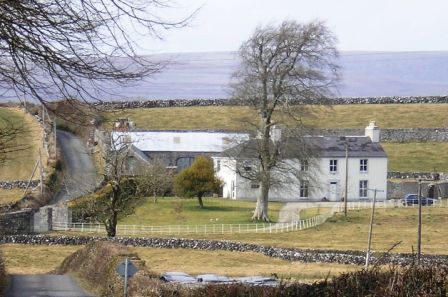
|
| Cloon | In 1814 Cloon House is recorded as the seat of B. Eyre. Lewis records the house as that of Burke Eyre in 1837. At the time of Griffith's Valuation Cloon House was occupied by Henry Lahiff when it was valued at £15. It is still extant and occupied by his descendents. |
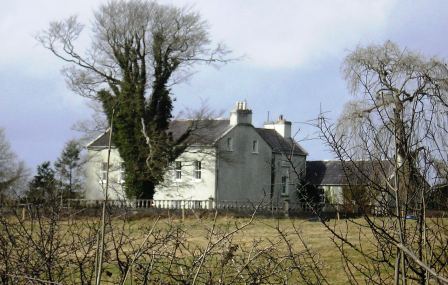
|
| Russaun (Russane) | Russaun, sometimes spelt Russane, appears to have become part of the Gregory estate, though occupied by the Bagot family, by the mid-19th century. At the time of Griffith's Valuation it was leased by William Gregory to John Bagot. However, in 1837 it was recorded by Lewis as the residence of the Lahiffe family. It is still extant and occupied. |

|
| Ballyturin | At the time of Griffith's Valuation Ballyturin House was the residence of John Bagot. In 1906 John C. Bagot was the owner of the house which was valued at £17. It was located in a commanding position overlooking rolling countryside. In May 1921, an RIC man (District/Inspector Cecil Blake), his wife and two British Army officers (Capt Cornwallis and Lt McCreery) were killed in an ambush by South Galway/East Clare Irish Volunteers at the gates of Ballyturin House. Margaret, Mrs Robert Gregory of Coole Park (Lady Gregory's daughter-in-law) escaped without injury. Ballyturin is now a ruin. |
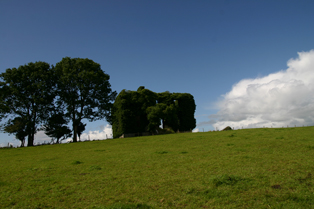
|
| Normangrove | In the 1850s the house at Normangrove, in the Kinvara area, was being leased by John O'Hara to Charles Higgins. In 1814 it had been recorded as the residence of John Burke and was also listed as a Burke house by Lewis in 1837. In 1906 Miss M.L. Forster held over 500 acres of untenanted land here as well as buildings valued at almost £3. The Forsters had held land at Normangrove at the time of Griffith's Valuation but no buildings. O'Connell states that the house was occupied until about 1914 and it fell into ruin therafter. The entrance and driveway lead to a farmyard and there is no trace of the house now. | |
| River View | River View was recorded as a seat of the Lopdell family by Lewis in 1837. By the time of Griffith's Valuation it was owned by the representatives of Vicisimus Knox and was being leased by the Vereker estate when it was valued at £5. It is now in ruins. | |
| Rosemeade/Lisheen | At the time of Griffith's Valuation this property was leased by Matthew Rosengrave to Patrick Carrick and valued at £21. It was accompanied by over 200 acres. In 1814 Lisheen was the seat of Jer. Rosingrave. The house is labelled on both the first and 25-inch editions of the Ordnance Survey map as Rosemeade but today is known as Lisheen. It is still extant and occupied as a farm house. |

|
| Ballymantan/Ballynamantan | At the time of Griffith's Valuation Ballynamantan was leased by Edward J. Hunt to Francis J. Davys. It was then valued at £15. Lewis records the house as the seat of Lombard Hunt. An occupied house still exists at the site though it is not the original. |

|
| Northampton | The townland of Poulnaveigh otherwise Northampton, containing Northampton House, "of modern construction", was offered for sale in the Encumbered estates court in June, 1865. In 1894 Slater refers to Northampton as the residence of Captain Harry de Vere Pery a son of the second Earl of Limerick. In 1906 it was the property of James Brady-Murray and was valued at £31. Northampton House is no longer extant having been demolished in the 1930s. http://www.northamptonns.com/index.php/eng/content/view/full/131 |

|
| Seapark House | This property is described as a caretaker's house on Christopher St. George's estate at the time of Griffith's Valuation when it was valued at £8. O'Connell states that it was locally known as "Foy's House" and was used as a fever hospital during the famine. It is now in ruins. |
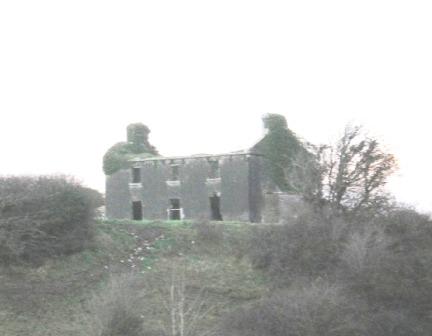
|
| Ballyclery | The house at Ballyclery is described as a caretaker's house for the St.George estate. It was valued at £8 in 1855. An occupied house still exists at this site but may have been modernised. | |
| Rosehill | The house at Rosehill is included in the sale of the estate of Denis Boland of Gort, in the Land Judges' Court, in the 1880s. It appears on the 1st editon Ordnance Survey map but is not marked on the 25-inch edition of the 1890s. An old entrance gateway survives. |

|
| Lavally (Kiltartan) | At the time of Griffith's Valuation, the representatives of Vicesimus Knox were leasing property valued at £47, including a mill,to John Langan, at Lavally, barony of Kiltartan. This building is no longer extant. | |
| Lisbrine House | At the time of Griffith's Valuation, Lisbrine was the residence of Richard Burke and was valued at £12. By 1906 it was owned by John Burke and was valued at £11 while a smaller house, valued at £6, was owned by Myles Burke. Lisbrine House is no longer extant. | |
| Ballylee Castle | Lewis records the Carrig family as residennt at Ballylee Castle in 1837. At the time of Griffith's Valuation, Patrick Carrick was leasing a herd's house, old castle and land from William Gregory at Ballylee, barony of Kiltartan. The property was valued at £5 at the time. In the early century Ballylee Castle was bought and renovated by the poet, W.B. Yeats. After falling into disrepair again it was acquired by the Office of Public Works as a museum to the poet. It was severely damaged by flooding in 2009 and is not currently open to the public. |

|
| Rindifin Cottage | In 1786 Wilson refers to Rhyndifen as the seat of Prendergast Smyth. Lewis records Rhyndifin as the seat of the Blaquiere family in 1837. It was occupied by Mary Moloney at the time of Griffith's Valuaiton, leasing from the Knox estate and was valued at £4. The entrance gateway is extant and a house still occupies the original site. |

|
| Annagh Cottage (Kiltartan) | In 1786 Wilson refers to Annagh as the seat of Mr. Burke. Redmond Burke is recorded as residing at Annagh in 1814. The house at Annagh, barony of Kiltartan, was occupied by Redmond Burke at the time of Griffith's Valuation, when it was valued at £10. Redmond Burke of Annagh, sold property in the Land Judges' Court in 1882. Annagh Cottage does not appear on the 25-inch Ordnance Survey map of the 1890s and no trace remains of it now. | |
| Forthill Cottage | Lewis records a Burke family resident at Forthill in the parish of Kilbeacanty in 1837. By the time of Griffith's Valuation the holding was being leased by Michael Diviney from William Gregory. The house was valued at £2 but was vacant at that time. It is no longer extant. | |
| Seamount | Seamount House was built by the Butlers of Cregg in the 18th century. O'Connell notes that Seamount was the residence of Maj. Theobald Butler, who had fought at the Battle of Waterloo, during the 1820s. At the time of Griffith's Valuation Denis Hynes was leasing from Edmund Donnellan, when it was valued at £16. Dr. Hynes had purchased the house from the Butler estate. In the early 20th century it was given to the Sisters of Mercy and is now a school. |

|
| Thornville Lodge | O'Connell states that this house was built by the Bricknell or Bucknell family in the later 18th century. It was later occupied by the Bishop of Kilmacduagh, Dr. Ffrench. Kinvara parish records also indicate that Arthur and Clare Ireland lived here in the 1830s. This may be the same Arthur Ireland who held the post of Burser at Queen's College, Galway in the 1850s. The house is still extant. | |
| Lydacan Lodge | Lydacan Lodge is recorded in the OS Name Books as the residence of John O'Hara. On the 1st edition OS maps the house is recorded as Lydacan Lodge. At the time of Griffith's Valuation Lydacan is recorded as the property of James O'Hara where he held a herd's house and 200 acres. | |
| Maryville House | At the time of Griffith's Valuation, Arthur Alexander occupied Maryville House at Cahermore, barony of Kiltartan, when it was valued at £8. Maryville Police Barracks was located nearby. The original Maryville House has disappeared and the house on the site of the barracks is known as Maryville House. |
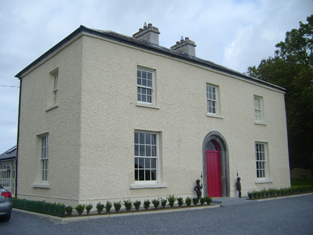
|
| Tiraloughan | In 1906 Lord Gough owned a property valued at almost £4 at Tiraloughin, parish of Beagh as well as over 100 acres of untenanted land. A house still exists at this location. | |
| Drumharsna | At the time of Griffith's Valuation, Lord Ashtown owned the townlands of Drumharsna North and South, barony of Dunkellin. A herd's house in Drumharsna South was valued at £2. By 1906 the buildings at this property were valued at £14. These buildings are no longer extant. | |
| Derryowen | A home of a branch of the Lopdell family in the 19th century held in fee and of their descendants the Blaquieres in the late 19th and 20th centuries. In July 1889 the notice announcing its proposed sale in the Land Judges' Court describes it as "a very good newly-built dwelling-house, with suitable out-offices". There is still an occupied house at the site. | |
| Rathorp | Lewis records Ratope as the residence of the late J. Foster. At the time of Griffith's Valuation it was in the possession of Patrick Geoghegan who held the property from the Marquess of Thomond and 526 acres. The house was valued at £7.10 shillings. A house still exists at the site. |
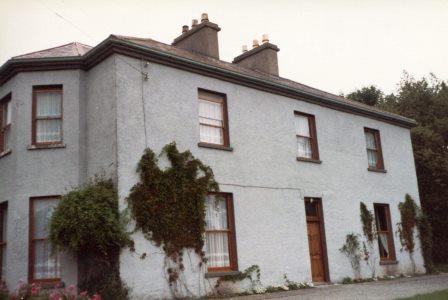
|
| Rockvale | Originally a D'Arcy home, built in the 1780s. Rockvale was the home of J. D'Arcy in 1837. By the time of Griffith's Valuation the house was occupied by John Mullins and valued at £7. 10 shillings. Mullins was leasing from the Marquess of Thomond. It is labelled Rockvale House (Constabulary Barracks) on the 25-inch Ordnance Survey map of the 1890s and is now a ruin. |
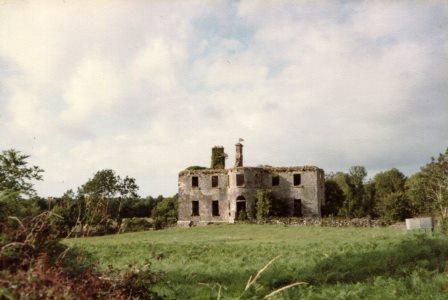
|
| Delamaine Lodge | According to O'Connell, Delamaine Lodge was occupied by a Huguenot merchant, Captain William de la Maine, in the late eighteenth century. It was later owned by the de Basterort family and afterwards by the Gregory estate. It is still extant. |
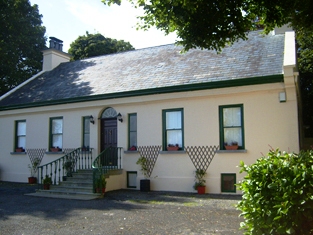
|

